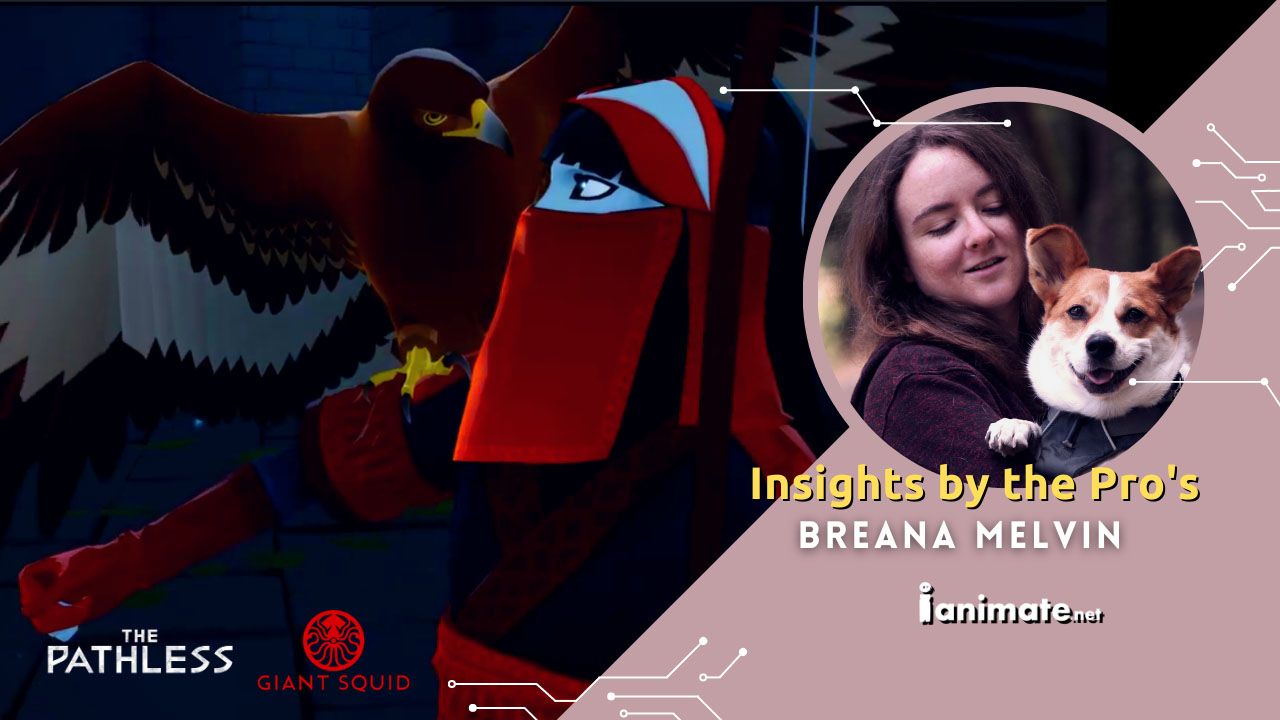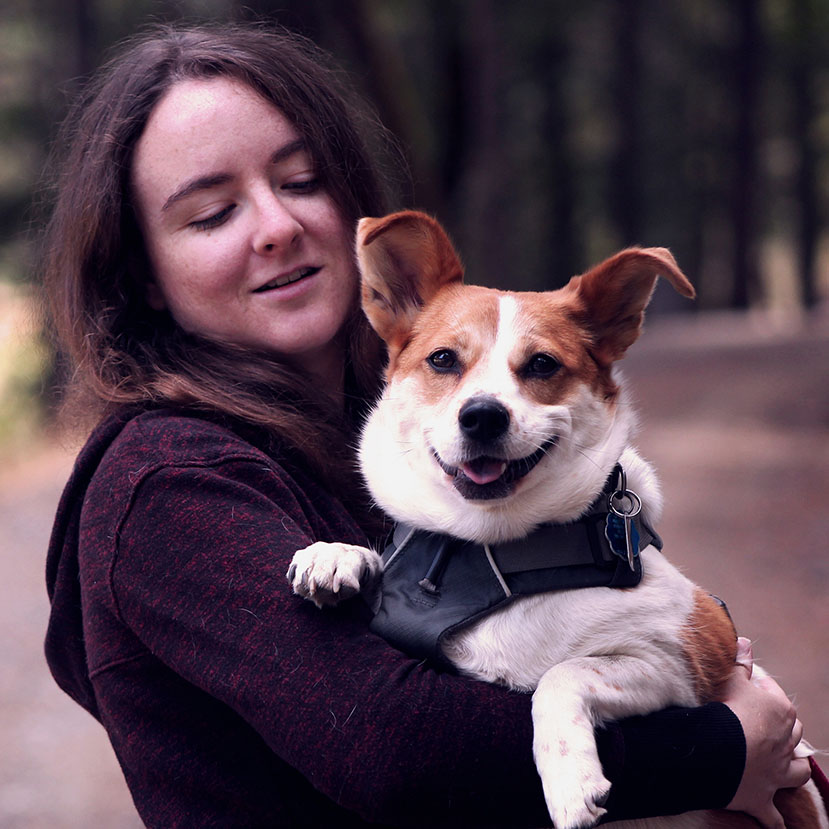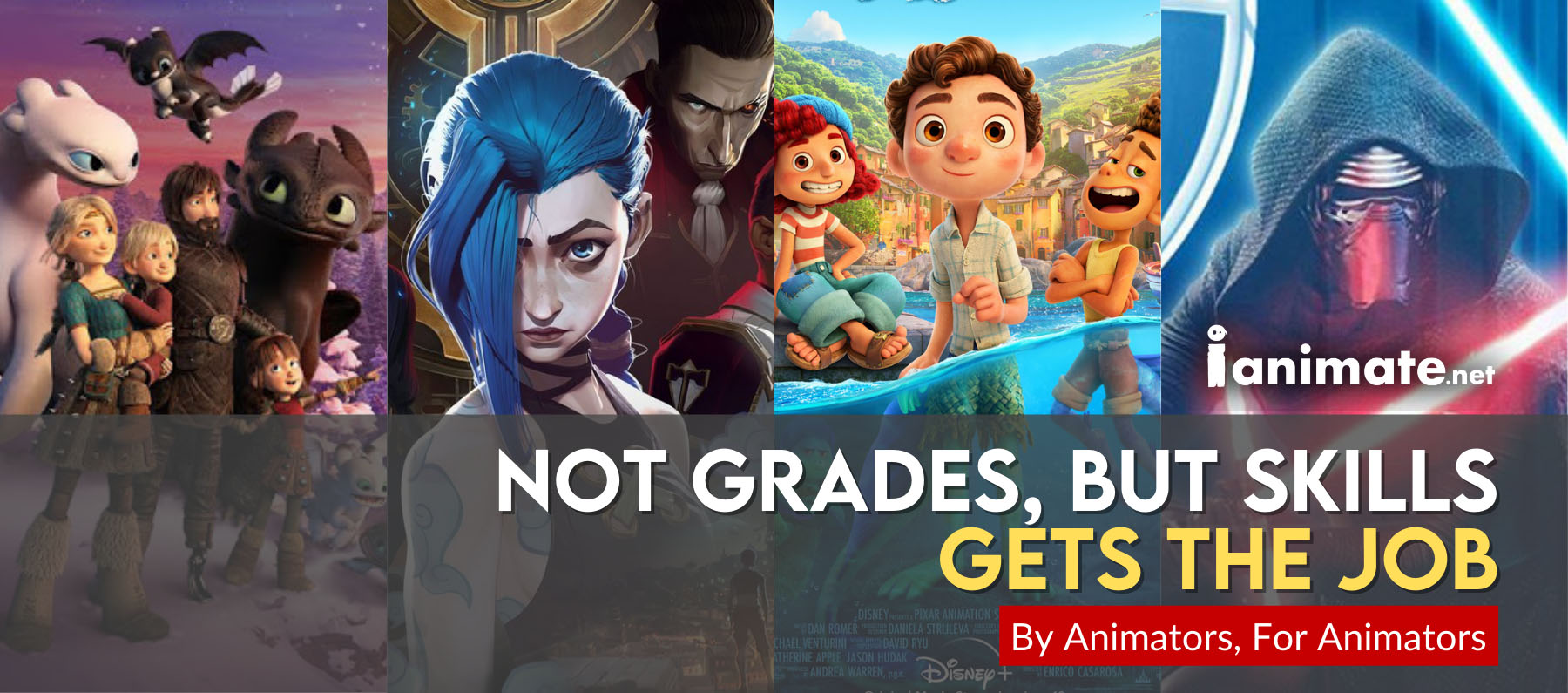Insights by the Pros with Spry Fox 3D Animator Breana Melvin
3D Animator and iAnimate Alumni, Breana Melvin, shares her stories and inspirations and how she succeeded in his animation journey.
“iAnimate provided the last bit of structured practice that I needed to bring my animation skills up to a hireable professional level.”

Meet Breana Melvin, a 3D animator, who has worked on both game cinematics and gameplay. Breana worked with The Pathless by the Giant Squid Studios as a Cinematics Animator. She provided additional gameplay animation and cleanup. Breana also focused on the creature and flighted characters, in addition to biped humanoids.
Today, Breana is currently working at Spry Fox as a Primary 3D gameplay animator for an unannounced project.
Alumni Interview
Animation Journey and Inspiration
iAnimate: Tell us a bit about your animation journey and throughout your time with us. Who or What inspired you to become an animator? How did you become an animator, and when did iAnimate become part of your journey?
Breana: I've always loved film and animation, but I didn't realize it was a job until I accidentally got signed up for a 3D animation in my freshman year of high school; after that, I was pretty much doomed to pursue it. I ended up going and spending way too much on art school, and then, after I couldn't get a job, I ended up taking a few supplemental classes through iAnimate with the little money that I had, spaced out over several years, until I got lucky and got a job on at Giant Squid animating eagles just after I had taken Brendan Body's flight class.
iAnimate: Can you tell us more about your role and responsibilities?
Breana: At every studio, I've worked at I've been one of a few or the only animator. As a result, I became the Lead Animator by default on the last two titles I worked on. In addition to making all the animation that's going to be in the game, I also have to coordinate and work with other members of the team to figure out what things to invest in and develop systems that animation will eventually be integrated into. Half the job is meetings, planning, and working well with others; it's more than just being able to animate well, but knowing how and when to animate in a way that will benefit the rest of the team and project.
iAnimate: What do you do to stay inspired and motivated animator?
Breana: I struggle with this a lot, but I find that carving out time to work on my own projects, looking at what other cool stuff my peers are working on, and revisiting media and behind-the-scenes features that originally made me want to do this all in the first place usually does the trick.
[Breana Melvin and dog]

Animation Lessons and Growth
iAnimate: How did iAnimate help prepare you for the industry? What were the most important things you learned at iAnimate?
Breana: iAnimate provided the last bit of structured practice that I needed to bring my animation skills up to a hire-able professional level. The shots on my reel right out of college were not great, I still had a lot of room to improve before anyone would consider working with me. But being able to work with feedback and deadlines was also critical.
iAnimate: What is the most challenging shot you’ve ever animated, and why did you succeed at the shot?
Breana: A lot of my hardest shots I've only finished because I had to, and not all of them were successful, especially my student work. Nowadays, I'm not struggling with the animation itself as much, but more with how things fit together in context, so there are more angles for problem-solving. I usually try to plan more ahead to avoid pitfalls. I'll also use tools and scripts to make work easier and faster, like using a pose library and space switching. I also make sure a rough animation is working in-engine first before investing the time it takes to finish it.
[Breana's Current Reel]
iAnimate: Do you have any demo reel or interview advice you can share with animators on the job hunt?
Breana: Only put good work on your reel. It's okay to let shots go if they are hurting your reel, even if you spent a lot of time on them. If the reel feels too short as a result, make the time to replace those older shots with something new. Also, don't worry about rendering, playblasts are fine (especially if you turn on viewport fog and add some lights to the scene to soften some of the artifacts); nobody cares if you know how to render, and it's a huge time sink. Also apply everywhere even if you don't think you hundred percent match the qualifications on a job listing; studios are just as desperate to find people as you are to get hired and will cast a wide net with those descriptions just to attract applicants. And don't take it personally or even a reflection work if you don't get hired. I've been on the other side of the interview, and there are a lot more considerations than just 'are they good?' We're hiring for roles with very specific project tasks in mind, so people who are great and amazing get turned down all the time. Also, a team may not always hire the most skilled applicant, especially at smaller studios, where hiring for culture is an equally important consideration.
iAnimate: What other advice do you have for current or future iAnimate students?
Breana: Just keep at it. I wasn't able to land a job until eight years after I graduated college, and when I finally did, it was entirely because I got lucky and happened to have the right shots on my reel for what a project needed at the time. So keep animating, even if you can only do it in your spare time between other multiple-day jobs.
Animation Career Advice & Tips
iAnimate: If there’s one animation tip or technique you’d share with someone wanting to animate in a feature film, what would it be?
Breana: Not so much a tip for feature film, but the animation in general: learn some rigging basics, and learn space switching, it will save you when it comes to animating more tricky maneuvers.
iAnimate: Given that there’s so much to learn, how would you recommend a brand new animator start their training?
Breana: Start with the basics, start with small ideas. Learn things in small bites, and work your way up to those more ambitious shots. Also, take advantage of all the free resources out there. For instance, it's amazing how many rigs are openly available now, whether free or for purchase; In comparison, I had nothing back when I was first learning.
iAnimate: What makes a great animator or an animator a studio would hire?
Breana: Besides being able to animate, you have to be able to work with others, you have to not have an ego, you have to be able to separate yourself from your work and let things go, and you have to make your work with the overall goals of the project in mind. Ultimately, studios are not just hiring people who can do the job, but hiring people they're going to be able to work with for the next several years.
Want to learn what Disney, Pixar, and Blizzard do in their animations?

Be mentored by industry professionals from the leading studios in the industry. Start your animation career and get the dream animation job you want! Learn more about iAnimate and the Workshops that are made just for you.
